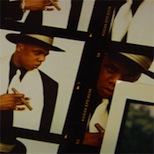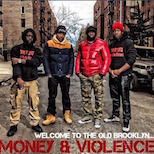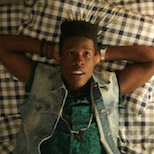Director Marc Silver Talks Jordan Davis Doc “3 & ½ Minutes”
03.02.2015
LEISURE
On November 23, 2012, Jordan Russell Davis was fatally shot by 45-year-old Michael Dunn at a gas station in Jacksonville, Florida. The story made national headlines because of the racial context involved with the shooting. Dunn, a Caucasian male, gunned down Davis, an African-American teenager, after a dispute over the volume of the rap music that was being played in the car Davis was in turned fatal. With the death of Trayvon Martin several months earlier already having the country on edge, the Davis shooting and the controversy surrounding it was magnified and illustrated yet another situation where an unarmed black male became a victim of senseless violence that appeared to be tinged with racial overtones. Perhaps not as high profile a case as Trayvon Martin or the subsequent deaths of Michael Brown and Eric Garner, the trial – which would eventually land Dunn in prison after a controversial hung jury verdict and retrial – did make headlines but has become a mere footnote in the larger context of racial tension that has swept the nation.
Considering the short attention spans of the masses, director Marc Silver preserved the memory of Davis with his documentary 3 & ½ Minutes that chronicles the trial of Dunn and the life of Jordan Davis by giving unprecedented access inside of the courtroom during the trial and with candid interviews with Davis’ parents and friends. The film premiered at the 2015 Sundance Film Festival and received rave reviews, a deal with HBO to debut this fall and left audiences sobbing. Life+Times caught up with Silver to discuss the film’s impact while in the midst of a countrywide #BlackLivesMatter campaign, gives some insight on the film’s unique structure and how 3 & ½ Minutes proves that the concept of a post-racial America is more façade than reality.
Life+Times: Did you have any idea the impact this film would have considering the events that followed in Ferguson with Michael Brown?
Marc Silver: We began making the film in summer of 2013, so a year before Ferguson. The trial of Michael Dunn happened in February 2014. So by the time Ferguson was becoming an iconic national occurrence we were only months ago from finishing the edit. We actually paused, and I remember watching Ferguson unfold on a laptop, and it evolved my perspective of what the film meant and how it would resonate with audiences.
L+T: Did the Ferguson protests have an affect on the final edit of the film?
MS: We actually didn’t change anything in the film. I knew that we wanted to make such a tight forensic examination and I felt like it would be kind of jumping on the bandwagon if we suddenly brought in the other cases. We didn’t need to overtly say that Jordan’s story is many other stories. I kind of thought audiences would get that without us telling them. In the end we grounded ourselves and carried on with exactly what the intention of the film was.
L+T: The way this story is told is very unique. It allows the audience to watch the events unfold without being told how to feel. Was that always your intention?
MS: I first started to think of how to construct this film so that it wasn’t a finger waving, head talking documentary. I knew that we had four ingredients. There was Ron and Lucy’s evolution. There’s the evolution of the trial itself. There’s the evolution of Michael Dunn from who he was to his life now in prison. And the evolution of Dunn’s relationship with his fiancé. We came up with the idea to allow the audience to be the jury so they weren’t entering the film bias. They’d be neutral, so to speak. But as Michael Dunn continuously shoots himself in the foot when on the stand and with these phone calls when discussing race, the neutrality of the jury evolves. Inside the court room race wasn’t allowed to be discussed because it wasn’t filed as a hate crime.
L+T: That’s interesting because race certainly played a factor into the shooting…
MS: Correct. One of my favorite moments in the film is Michael Dunn’s lawyer claiming it’s the crazy people outside putting race into this, and that his client never brought race into this. And I think that straddles the position between how race was not allowed to be discussed in the courtroom and public opinion knowing very well that was is quite a pivotal thing as to why this happened. That doesn’t come up until about half way through the film. I think it’s very important that we made it that way so by the time race is brought into the film, the audience has already reached that conclusion before we put that upon them.
L+T: You were an outsider trying to make a film about a situation where a mother and father had just lost their child, how were you able to gain their trust that you would tell this story the right way?
MS: Obviously I’m trying not be intrusive to a situation I can’t even imagine. But at the same time I wanted to be close enough to the story and the people behind the headlines or the news. I have a perception that the news dehumanizes, and I think a documentary can re-humanize from an activist point of view. So there’s a fine line between being too intrusive and also being close enough to where their true personalities come out on screen. I think despite the facts, figures, trial, etc., what it’s really about is two human beings whose lives have been forever changed by basically an unnecessary shooting. And I think intimacy is very important when it comes to audiences being able to empathize.
L+T: Can you discuss the access you were able to get with the audio recordings, courtroom video and the like into the film?
MS: We basically made an agreement with the court house that we would be able to have cameras in the court room and send out feeds that main stream media would be able to use daily. But we retained the rights to those cameras and then organize that material to edit. With Michael Dunn’s phones calls, they’re public record in the state of Florida, which for us was obviously incredible. We requested to use both him and his fiancés phone calls during the trial through his lawyer and his family, actually. His family wouldn’t speak to the media because they worried that they’d cry on camera and that’d be exploited in some way. So given that we weren’t able to get an interview with anyone from Dunn’s side, the phones calls became a very useful way in evolving his character, and also revealing this double speak where someone can claim to be victim when they’re actually the killer.
L+T: Perhaps it served as a way to show how “post-racial” America is only “post-racial” when the cameras are on?
MS: I think the revelation of that double speak, for me, became a metaphor of how race is handled in the U.S. with this allusion of branded post racial society, when underneath, there’s anything but that. I felt like with Michael Dunn, even though it’s like the story of one man, its actually he becoming the metaphor of half the problem of race in the U.S.





